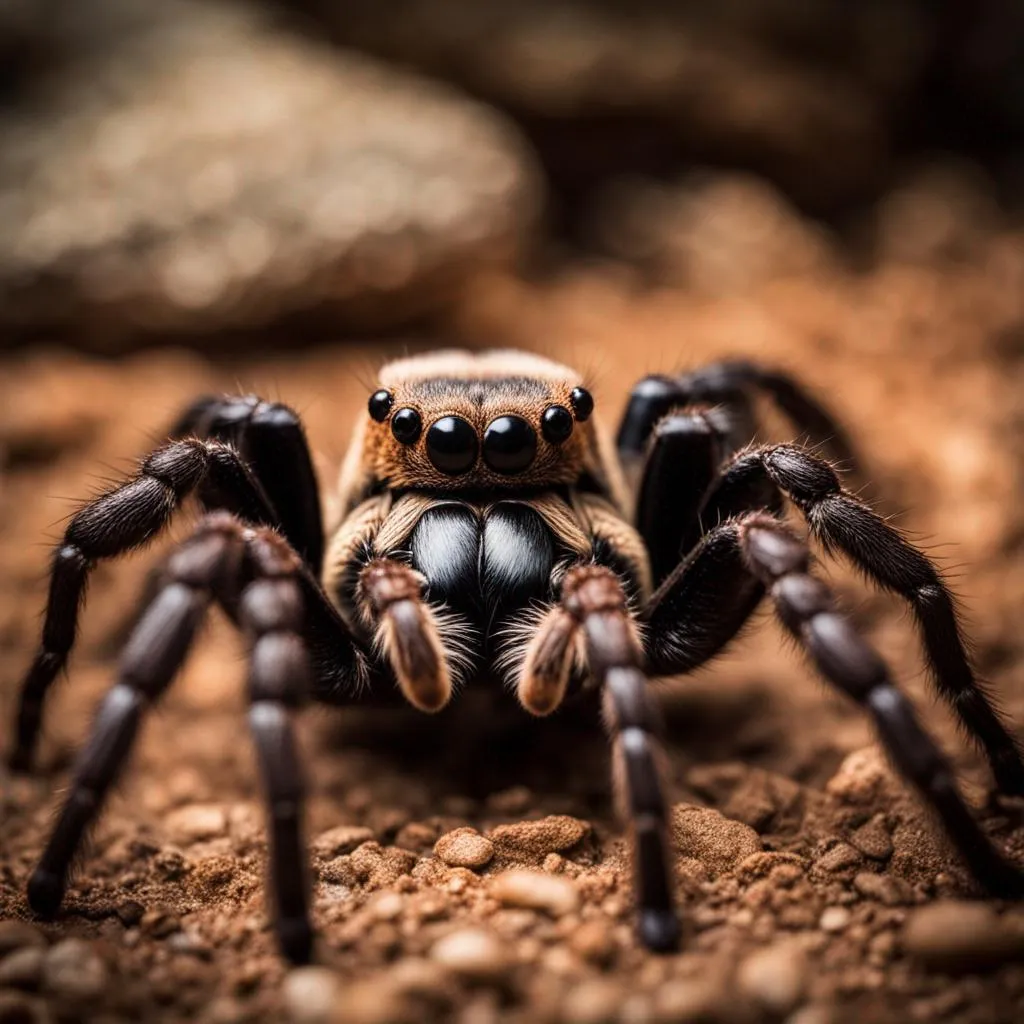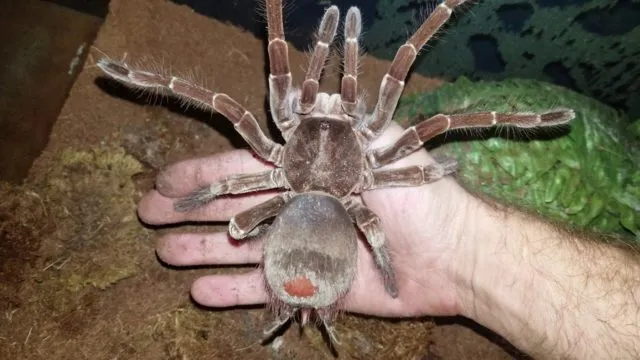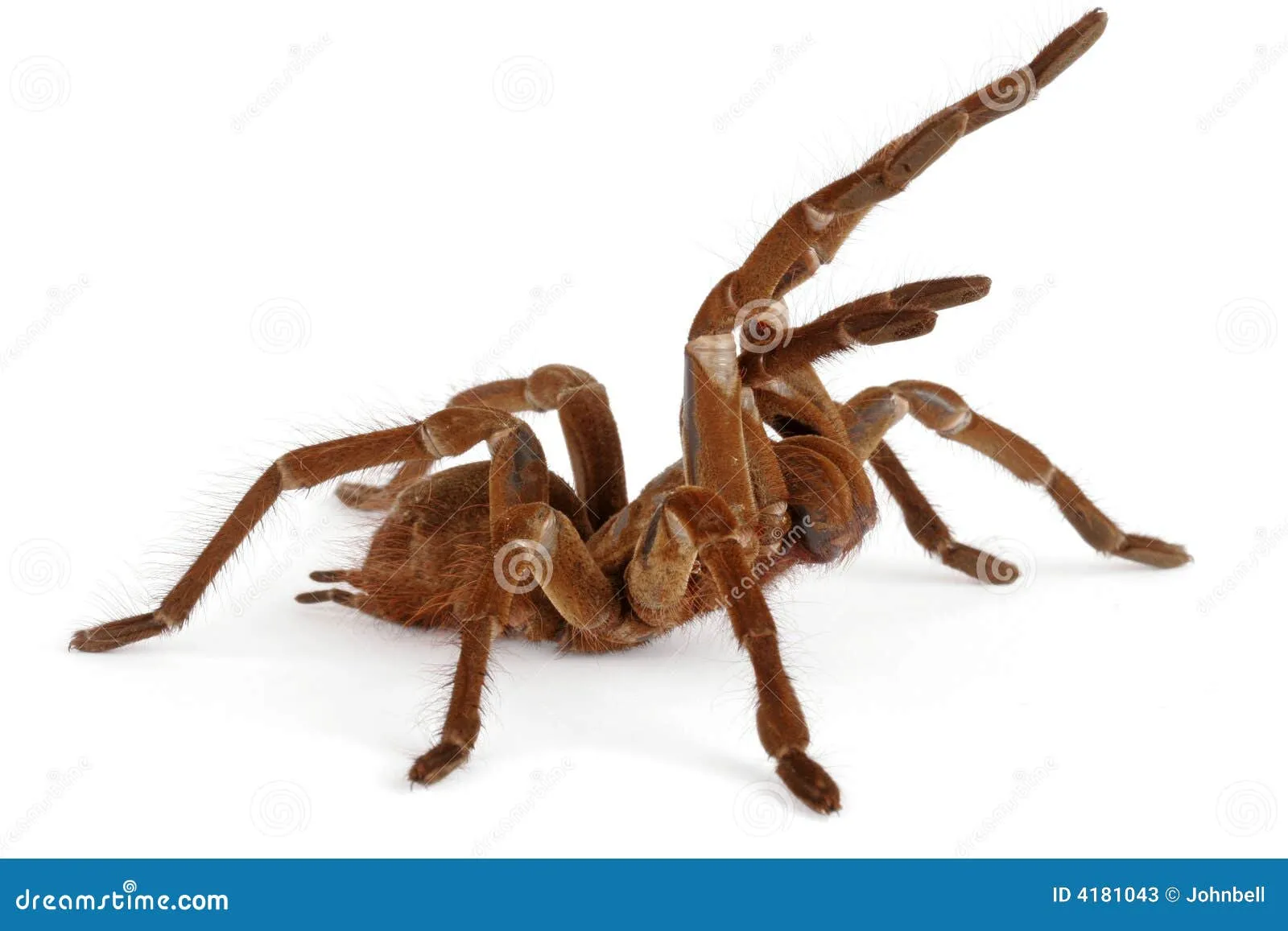What is the Goliath Birdeater Tarantula?
The Goliath Birdeater (Theraphosa blondi) is the world’s largest known tarantula, a title that immediately sparks curiosity about its impressive size. Native to the rainforests of northern South America, these spiders are a fascinating subject for anyone interested in arachnids. They are a sight to behold, with their imposing size and distinctive appearance, making them a captivating subject of study and, for some, a unique pet. Their size isn’t just a matter of record; it also plays a significant role in their survival, hunting strategies, and the overall ecological role they play in their environment. Understanding the Goliath Birdeater starts with appreciating its size and what that means for this remarkable creature.
Physical Characteristics of the Goliath Birdeater
Beyond their size, Goliath Birdeaters possess several other distinctive physical traits. Their bodies are covered in dense, reddish-brown hairs, which provide both camouflage and sensory input. These hairs also serve as a defense mechanism; when threatened, the tarantula can flick off urticating hairs that cause severe irritation to predators. The Goliath Birdeater’s fangs are also quite substantial, capable of delivering a painful bite, though their venom is not considered lethal to humans. Their legs are thick and powerful, allowing them to move quickly and efficiently across the forest floor. These physical characteristics, combined with their impressive size, make the Goliath Birdeater a formidable predator in its natural habitat.
Leg Span and Body Size

The Goliath Birdeater’s size is most often described by its leg span, which can reach up to 12 inches (30 cm) or more. This measurement is taken from the tip of one leg, across the body, to the tip of the opposite leg. While the leg span is impressive, the body itself can be quite large, with some females having a body length of over 4 inches (10 cm). The sheer bulk of these tarantulas is a sight to behold, and their weight can be substantial, sometimes exceeding 6 ounces (170 grams). It is this combination of leg span, body size, and weight that makes the Goliath Birdeater the largest spider in the world, a fact that fascinates both arachnologists and enthusiasts alike.
Factors Influencing Size
Several factors contribute to the ultimate size a Goliath Birdeater reaches. Genetics play a significant role, as some individuals are simply predisposed to grow larger than others. Diet is also crucial; a consistent and nutritious diet of insects and small vertebrates can promote healthy growth. Environmental conditions, such as temperature and humidity, can also affect growth rates. Furthermore, the availability of prey in their natural habitat or in captivity can impact the size they attain. The combination of these factors determines the potential maximum size of a Goliath Birdeater, with optimal conditions leading to the largest specimens.
Diet and Nutrition’s Role
The Goliath Birdeater’s diet is a major determinant of its size and overall health. In the wild, they are opportunistic predators, feeding on a variety of prey, including insects, earthworms, and even small vertebrates like lizards, frogs, and occasionally, small birds. In captivity, a balanced diet of insects, such as crickets and roaches, is essential. Supplemental feeding with small pieces of meat can also be beneficial. Regular feeding, with appropriate portion sizes, ensures the tarantula receives the nutrients it needs to grow and maintain its size. Providing a diverse diet and monitoring the spider’s feeding habits are vital for optimal growth and well-being.
Age and Growth Stages

Goliath Birdeaters, like all tarantulas, grow through a process called molting, where they shed their exoskeleton to accommodate growth. The frequency of molting decreases as they age. Juveniles molt more frequently than adults. Each molt is an opportunity for growth, and the size increase can be quite noticeable. It can take several years for a Goliath Birdeater to reach its full size, with females typically living longer and growing larger than males. Understanding the molting process is critical for any keeper, as it is a vulnerable time for the spider, and proper care is necessary to ensure a successful molt.
Size Comparison with Other Tarantulas
Comparing the Goliath Birdeater to other tarantula species highlights its exceptional size. While many tarantulas are impressive, few come close to matching the Goliath Birdeater’s dimensions. The Pinkfoot Goliath and the similar size of the Giant Huntsman are also large species, but the Goliath Birdeater typically surpasses them in both leg span and overall mass. Even within the Theraphosa genus, the Goliath Birdeater is larger than other related species. This size difference makes it a standout among tarantulas, solidifying its position as the largest spider in the world and a source of constant fascination.
Lifespan Impact on Size
A Goliath Birdeater’s lifespan significantly impacts its potential size. Female Goliath Birdeaters have a much longer lifespan than males, often living for 15 to 25 years, while males typically live only 3 to 6 years. This longer lifespan allows females more time to grow and molt, contributing to their larger size. The extended growth period for females means they can reach their full potential size, whereas males may not have the time to achieve the same dimensions. Lifespan, therefore, is a key factor in determining the maximum size a Goliath Birdeater can reach.
Goliath Birdeater Size Myths Debunked

There are several myths surrounding the size of the Goliath Birdeater. One common misconception is that they regularly eat birds, hence the name. While they have been observed feeding on small birds on occasion, their diet primarily consists of insects and other invertebrates. Another myth involves their ability to kill and consume large animals; however, their size and venom potency are not sufficient to take down significant prey. Understanding these myths and the reality of their size is crucial for dispelling misconceptions and appreciating these amazing creatures. Their size is impressive enough without exaggerations.
How to Measure a Goliath Birdeater’s Size
Accurately measuring a Goliath Birdeater requires a bit of patience and care. The most common measurement is the leg span, which is measured from the tip of one leg, across the body, to the tip of the opposite leg. It’s important to use a soft ruler or measuring tape to avoid harming the spider. The body length can also be measured, though this is often done after a molt when the exoskeleton is shed. Weighing the tarantula using a gentle scale provides an additional measure of its size and overall health. Proper measurement helps in tracking the growth of the tarantula and monitoring its health.
